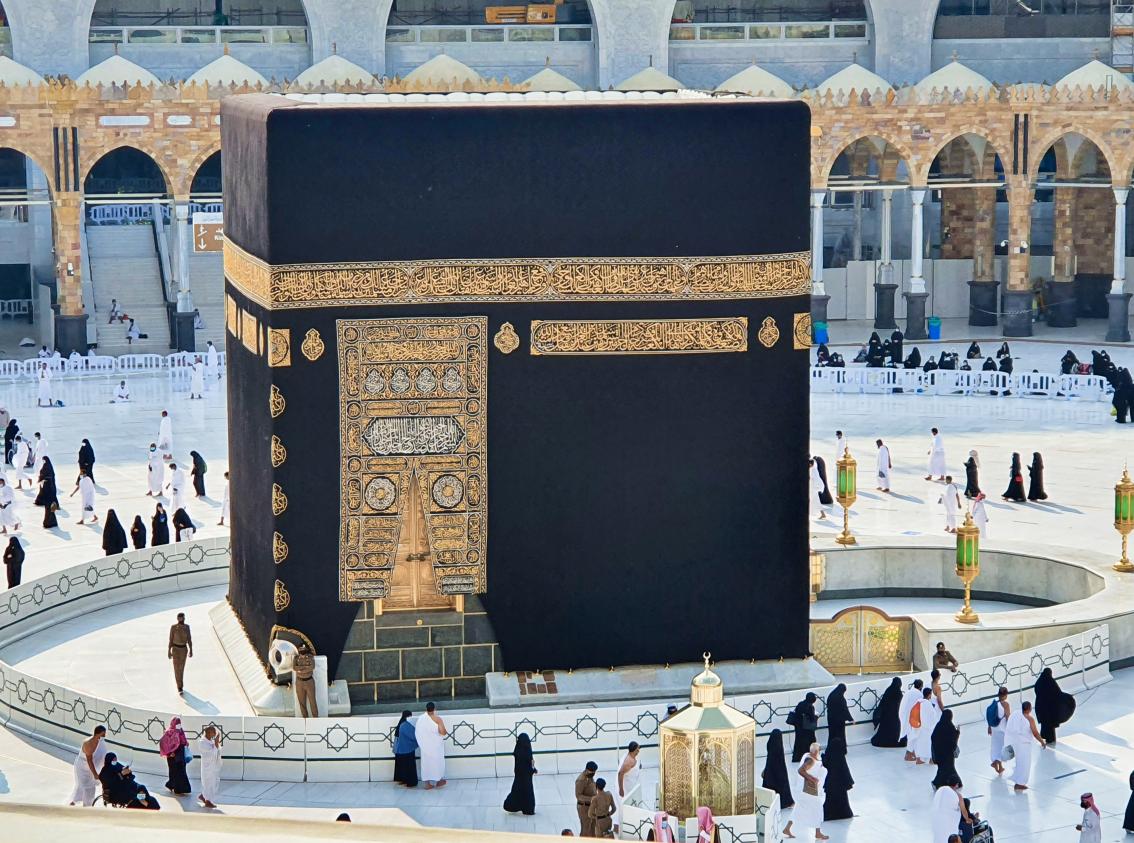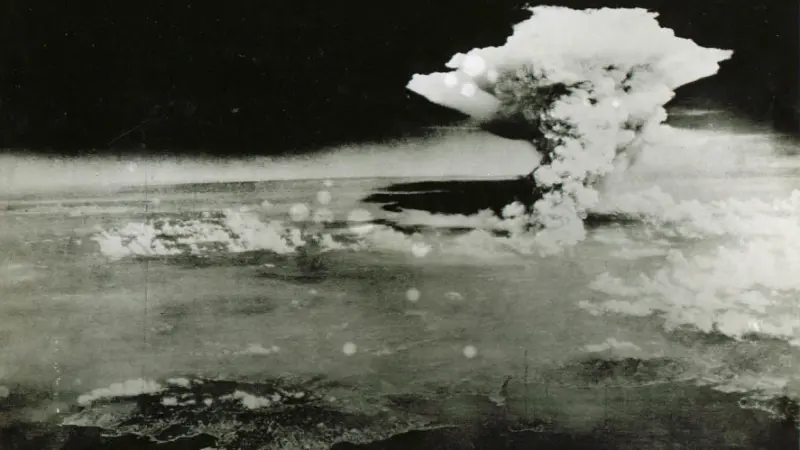Religious Artifacts: The Black Stone of Mecca – Al-Ḥajar al-Aswad

The Black Stone of Mecca, also known as Al-Ḥajar al-Aswad, is a precious and venerated artifact in the Islamic faith. It is located within the Kabah, a revered shrine situated in the Great Mosque of Mecca. The Black Stone is believed to have been a part of the pre-Islamic beliefs of the Arabs, and it is an essential component of the annual Islamic pilgrimage, known as the Hajj.
Today, the Black Stone consists of three substantial pieces and several fragments, encircled by a stone ring and bound together by a silver band. Islamic lore maintains that the stone was given to Adam (Peace be upon him) after his expulsion from Paradise. Initially white, the Black Stone has turned black due to its absorption of the sins of the multitude of pilgrims who have kissed and touched it over the centuries.
Placement of the Black Stone
The Kaaba, a sacred and awe-inspiring structure in the Islamic faith, is a cube-shaped edifice that stands approximately 50 feet tall. Constructed from a combination of gray stone and marble, the Kaaba’s foundation measures about 35 by 40 feet, and its corners are oriented to roughly correspond to the four points of the compass.
Scientific Research about the Black Stone
It is believed by many that the Black Stone is actually an Meteoroid, but this can not be confirmed. There are arguments against this thesis, for example that the stone apparently does not sink in water. This hints at the material being of a much lighter density, possibly of volcanic origin. Despite numerous attempts to have the stone researched by geologists and related scientist, the authorities dismiss attempts to do so, citing the holiness of the Object. This has raised controversies in the scientific communities. It serves as a remainder that Faith & Religion and Science do not cooperate well together oftentimes. Theologians and other Researchers of religions struggle to have access to materials needed for their research. This limited accessibility includes the Archives of the Vatican as well as the holy Artifacts of Islam. We hope that in the future there can be a better dialogue and exchange of Information between Science and Religion.
The Hajj
Every year, millions of Muslims from around the world undertake the Hajj, which includes the ritual circumambulation of the Kaaba seven times. This practice, known as Tawaf, is an integral component of the pilgrimage, during which devotees express their reverence for Allah and seek divine forgiveness for their sins. As part of this ritual, pilgrims also kiss and touch the Black Stone, a venerated artifact set into the Kaaba’s eastern corner.
At the conclusion of the month-long pilgrimage, known as Dhū al-Ḥijjah, a symbolic washing of the Kaaba takes place. This ritual, known as the cleaning ceremony, signifies the end of the holy period and the return to everyday life. The Kaaba, with its rich history and profound spiritual significance, remains a sacred symbol of Islamic tradition and faith, inspiring awe and devotion in the hearts of countless Muslims around the globe.
Planning and organizing a travel to Mecca for the Hajj or Umrah can be demanding. Millions of Visitors often come in parallel during the main season. Knowing the right time and organizing ahead helps visitors to have a most enjoyable travel. There are services to inform Travelers and help to compare flights, hotels, transfers to Jeddah International Airport and Meccah.
Why it’s not whole?
The Black Stone’s fragmented state is a testament to the tumultuous and rich history of this sacred Islamic relic. Throughout the ages, many have sought to possess or damage the Black Stone, and as a result, it has endured a series of calamities and trials.
One such event occurred during the Siege of Mecca in 683 AD, a pivotal moment in Islamic history. During this conflict, the Umayyad army, led by Yazid I, laid siege to Mecca, determined to subdue the city and assert their political authority. The siege lasted for a month and led to intense fighting that resulted in significant damage to the Kaaba and the Black Stone.
In 930, the Qarmatian sect plundered the Black Stone, carrying it away as spoils of war. The stone was held for ransom for approximately 20 years, causing widespread anguish amongst Muslims at that time. Nevertheless, the Black Stone was eventually recovered and returned to its place in the Kabah, where it remains a revered symbol of Muslim history and faith to this day.
Historical accounts suggest that the Umayyad army used catapults to launch incendiary projectiles at the city, causing widespread destruction and devastation. The Kaaba, one of the most revered and sacred sites in the Islamic world, was not spared, and the Black Stone sustained severe damage as a result of the fire.
The Black Stone remains a beloved and venerated object of reverence for Muslims worldwide. A symbol of the faith’s deep roots and unshakeable devotion to the Divine. Its fragmented state serves as a poignant reminder of the challenges and struggles that Muslims have faced throughout history. Aswell as of the resilience and fortitude that have allowed the faith to endure and flourish over the centuries.
Ritual of Kissing the Black Stone
The Black Stone, a cornerstone of the Kaaba, holds immense significance in the Islamic faith. As part of the tawaf, the ritual circumambulation of the Kaaba, Muslims strive to touch and kiss the Black Stone, following the example of the Prophet Mohammed.
It is important to understand that the Black Stone is not an object of worship, but rather a symbolic representation of the faith’s deep roots and history. In essence, it is akin to a country’s flag – a symbol of respect and pride. Kissing it is not an obligation, but rather a display of affection, as one would kiss their child.
The Second Caliph of the Muslims, Umar bin al-Khattab, once said,
“I know that you are a stone, you do not cause benefit or harm, and if it were not for the fact that I had seen Allah’s Messenger – peace and blessings of Allah be upon him – kiss you, I would never have kissed you.”
This statement highlights the significance of the Black Stone and how its veneration has been passed down through generations for practing Muslims.
While many strive to touch and kiss the Black Stone, it is not always possible to do so. In such cases, Muslims can point towards the stone or kiss an object that has touched it. Ultimately, the Black Stone serves as a powerful symbol of the Islamic faith, representing the deep connection between Muslims and their religion’s historical roots.





